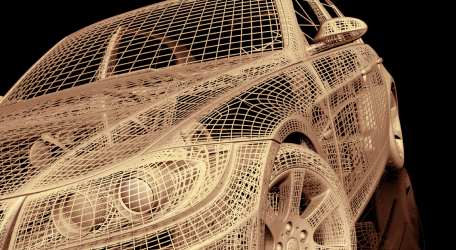
Dr. Srikanth Pilla was a scientist in the BIONATES theme from 2011-2013 with a background in mechanical and civil engineering. He joined the faculty of Clemson University in 2013 and is currently an assistant professor of automotive engineering. Dr. Pilla recently began a project reducing the weight of automotive car doors to meet the corporate average fuel economy (CAFE) standards while maintaining safety integrity through advanced materials.
What did you work on at WID?
At WID, my work focused on two areas: (1) developing tailorable functional (bio)compatible (bio)polymeric blends to be used as tissue scaffolds and (2) developing new mechanisms in recyclability, and sustainability. For the former, we have collaborated with cell culture researchers to investigate the cell life on these scaffolds. For the latter, the goal was to enhance the recyclability while also advocating sustainability through the introduction of renewable materials in various applications including packaging, construction, etc.
What do you work on now?
Currently, I am working on lightweight functional materials focusing on two major thrusts: composites and thermoelectrics. The aim of the composites thrust is to develop new high-strength lightweight materials and low-cost yet high-speed manufacturing methods that help to expedite their introduction into the automotive sector yet meeting the performance metrics as desired by Federal Motor Vehicle Safety Standards. The goal of the thermoelectrics thrust is to develop energy-efficient, high-temperature resistant, high ZT thermoelectric materials that convert waste heat into electricity. To enable these two, I have to overcome several bottlenecks including addressing some fundamental challenges. Overall, my current research is aimed at a fundamental understanding of the synthesis-processing-structure-property relationships in polymers, biopolymers, polymer derived ceramics, multifunctional composites, thermoelectrics, nanocomposites, microcellular foams and LCA modeling and analysis.
What are your tools for analysis?
My tools for analysis have always been the ones used to understand the molecular structure of polymers such as nuclear magnetic resonance spectroscopy, infrared spectroscopy, differential scanning calorimetry, X-ray diffraction, dynamic mechanical analysis, universal testing machine, thermomechanical analysis, gel-permeation chromatography, etc.
However, of late owing to my new research focus in thermoelectrics, I have also been using Raman to identify and analyze the synthesized molecules and groups. Additionally, I have been using a laser flash apparatus for measuring the thermal conductivity and developing custom methods to measure electrical conductivity and thermopower.
My biggest tool for writing is silence…even a small sound distracts me from the thought I started with.
-Srikanth Pilla
A longtime favorite analysis tool that I have been using since 2005 is microscopy: scanning and transmission electron microscopy (SEM/TEM). With TEM I have engineered new specimen preparation methods to scope biological samples that have convoluted morphology such as core-shell, core-shell with embedded particles, etc. Since a lot of my work involved scoping using SEM for the microcellular samples, the bubble size and distribution was analyzed using image analysis tools such as ImageJ.
Lastly, I have developed custom equipment including a differential thermal/freezing device for analyzing the effect of variable temperature on the crystal lattice and growth in a water-based polymeric substrate. Since such an infrastructure is non-existing in the commercial realm, there is no way other than custom designing and building for which one has to be hands-on.
Tools for writing?
My biggest tool for writing is silence. Whenever I need to write a paper, or a proposal, I just need utter silence. Even a small sound distracts me from the thought I started with.
Specifically, while writing proposals, I always put the outline first which simply mimics the requirements from the solicitation. Then I start filling out each of those sections using the idea that I generated.
I use Microsoft word for writing, Endnote for citations, and PowerPoint for images.
Tools for collaboration?
In my opinion, the greatest tool for collaboration is communication. If you have a need for a complementary expertise, then it is critical that you communicate with the other person seeking help to work together.
I have always liked the collaborative environment that WID offered, be it the daily interactive tea breaks, weekly seminars, monthly talks or occasional workshops. Although I miss such extensive interactions at my new institution, I have found other ad hoc opportunities to communicate and collaborate.
During collaboration my tools are webex/skype, cloud storage drives such as drop box, gdrive, etc., and online editing platforms such as office 365, google docs, etc.
Your ultimate tool for discovery?
My ultimate tool for discovery is the passion with which I approach a given task. Curiosity, drive to excel, perfection, punctuality, and more importantly discipline in what you do, also leads someone to discover new things perhaps without knowing that they are actually doing it.
Curated by Patricia Pointer


You must be logged in to post a comment.